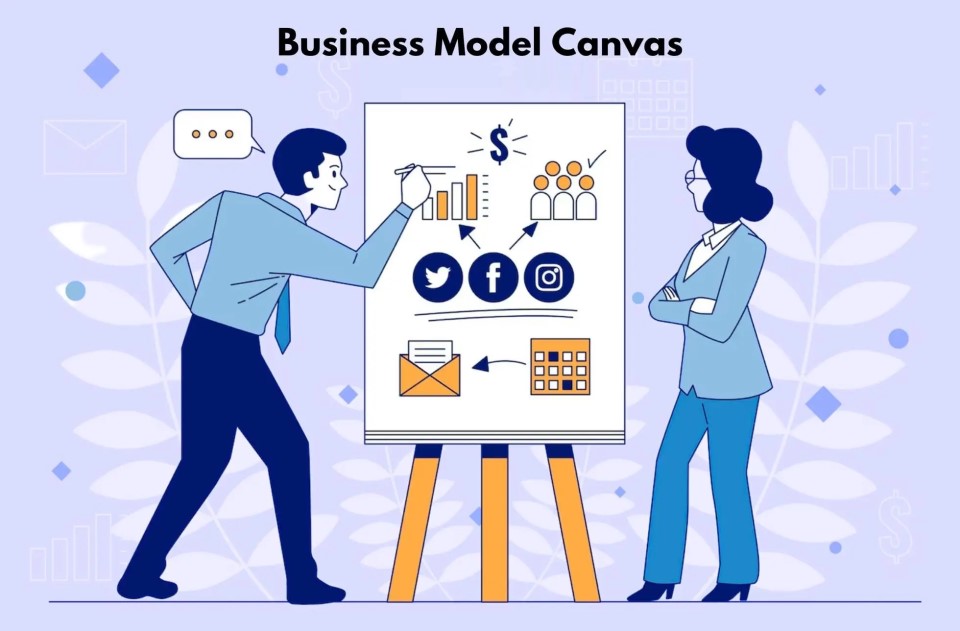
The Business Model Canvas offers a structured visual format that helps organizations outline the key aspects of their business model. These nine elements include customer segments, value propositions, channels, customer relationships, revenue streams, key resources, key activities, key partnerships, and cost structures. Each of these building blocks plays a vital role in ensuring that a business remains competitive. They also continue to deliver value to its target audience. Whether you are a startup or an established company, the Business Model Canvas helps quickly identify strengths, weaknesses, and opportunities for improvement.
Why the Business Model Canvas is Crucial for Strategic Planning
The Business Model Canvas simplifies strategic planning by giving businesses a holistic view of their operations. It facilitates collaboration among stakeholders by creating a shared understanding of how the business functions. This structured approach ensures that every department is aligned with the company’s overarching goals. Additionally, the it encourages continuous feedback and improvement, helping businesses stay agile and responsive to market changes. In industries where innovation is critical, such as technology or e-commerce, the framework helps organizations test different business models and refine their strategies quickly.
Scenario planning is another key benefit of using the Business Model Canvas. By identifying how different elements of the business interact, companies can anticipate potential challenges and adapt their models accordingly. For example, if a company identifies a shift in customer behavior or supply chain disruptions, the framework enables it to make informed decisions to maintain competitiveness. This adaptability is crucial in today’s globalized markets, where businesses must constantly evolve to meet customer demands and market dynamics.
Key Elements of the Business Model Canvas
The nine building blocks of the Business Model Canvas represent the key areas every business must manage. These components include customer segments, which define the target audience, and value propositions. They also outline the unique offerings that set the company apart from competitors. Additionally, the framework identifies the channels through which the business reaches its customers.
Revenue streams are another critical element, highlighting the ways businesses generate income. Meanwhile, key resources and key activities describe the assets and operations necessary for delivering the value proposition. Key partnerships focus on the collaborations with other organizations that enhance the business model. The cost structure outlines the expenses associated with running the business.
Each of these elements must be well-aligned for a business to succeed. For example, a company like Nespresso used the Business Model Canvas to develop its two-part strategy of selling coffee machines and recurring coffee pods, which ultimately created a loyal customer base and generated continuous revenue streams. The ability to understand and align these components is a crucial step toward achieving long-term success.
Advantages of Using the Business Model Canvas
One of the main advantages of the Business Model Canvas is its simplicity. By organizing all essential elements into a single visual format, businesses can easily communicate their strategy to stakeholders, partners, and investors. This makes it easier to explain the business model to different audiences, improving collaboration and alignment across teams. Additionally, its visual nature helps businesses quickly identify gaps or misalignments that may need to be addressed.
Moreover, the Business Model Canvas allows for experimentation and iteration. By testing different versions of the business model, companies can explore various approaches to improving profitability and market fit. This flexibility is crucial for businesses that operate in fast-paced industries where consumer needs and market conditions change rapidly.
Limitations and Challenges
Despite its numerous benefits, the Business Model Canvas has some limitations. One potential drawback is that its simplicity may oversimplify the complexities of larger or highly specialized businesses. Certain aspects, such as intricate financial structures or nuanced customer relationships, may not be fully captured in a single-page format. Additionally, while the framework is excellent for visualizing and strategizing, it does not provide specific guidance on how to execute the business model. This requires further analysis and detailed planning beyond the canvas itself.
Some businesses may find it challenging to adapt the framework to their specific needs without prior knowledge of business modeling. For highly complex or niche industries, companies may need to use a more detailed approach to address unique challenges or opportunities beyond the standard canvas.
The Business Model Canvas is an invaluable tool for businesses seeking to refine their operations, improve efficiency, and foster innovation. By clearly visualizing the nine essential components of a business model, the *Business Model Canvas* helps companies analyze strengths, identify improvements, and respond to market changes. While it may need adaptation for complex industries, its simplicity and flexibility make it accessible to businesses of all sizes. As markets evolve, companies using the *Business Model Canvas* effectively will position themselves better for success in competitive environments.

